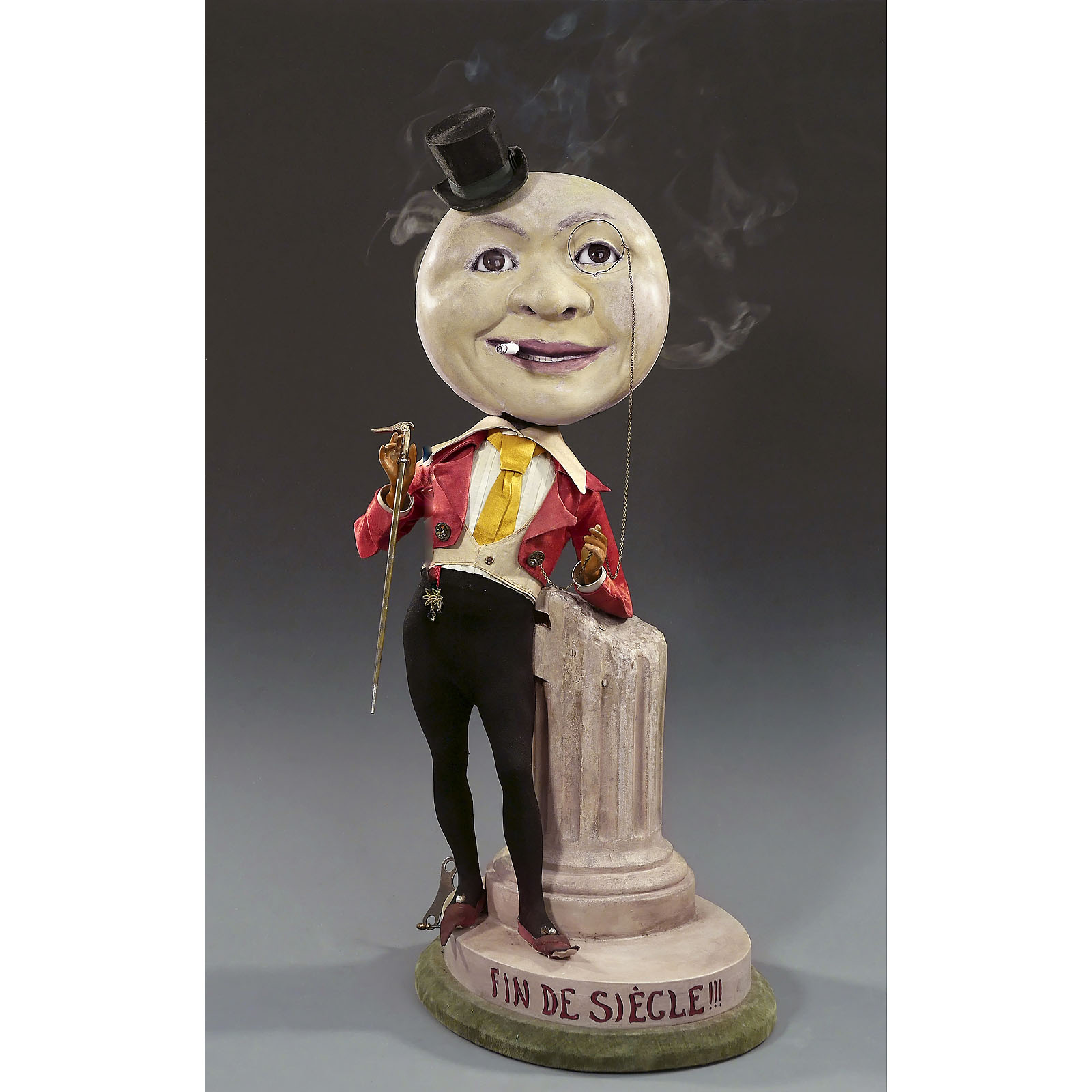


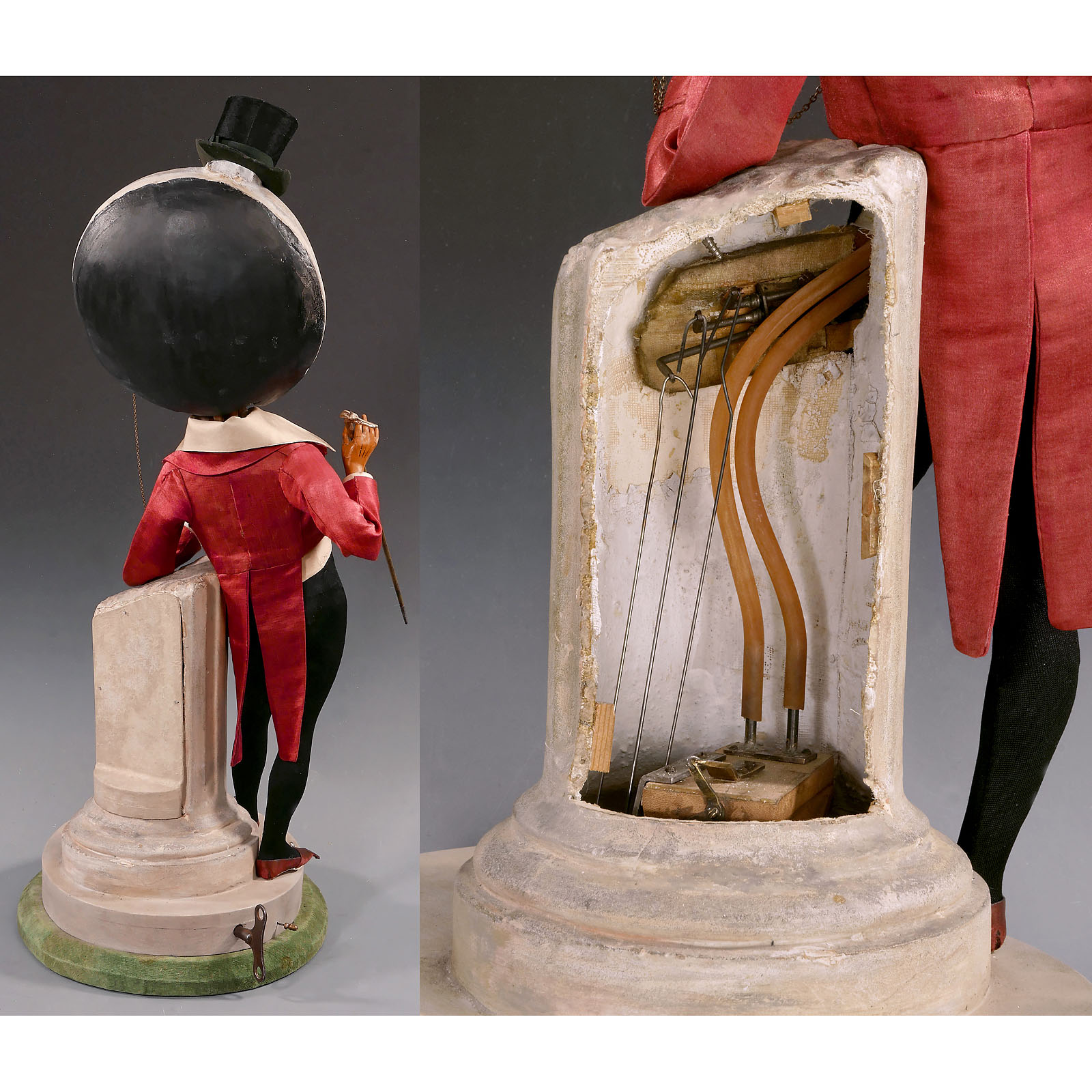

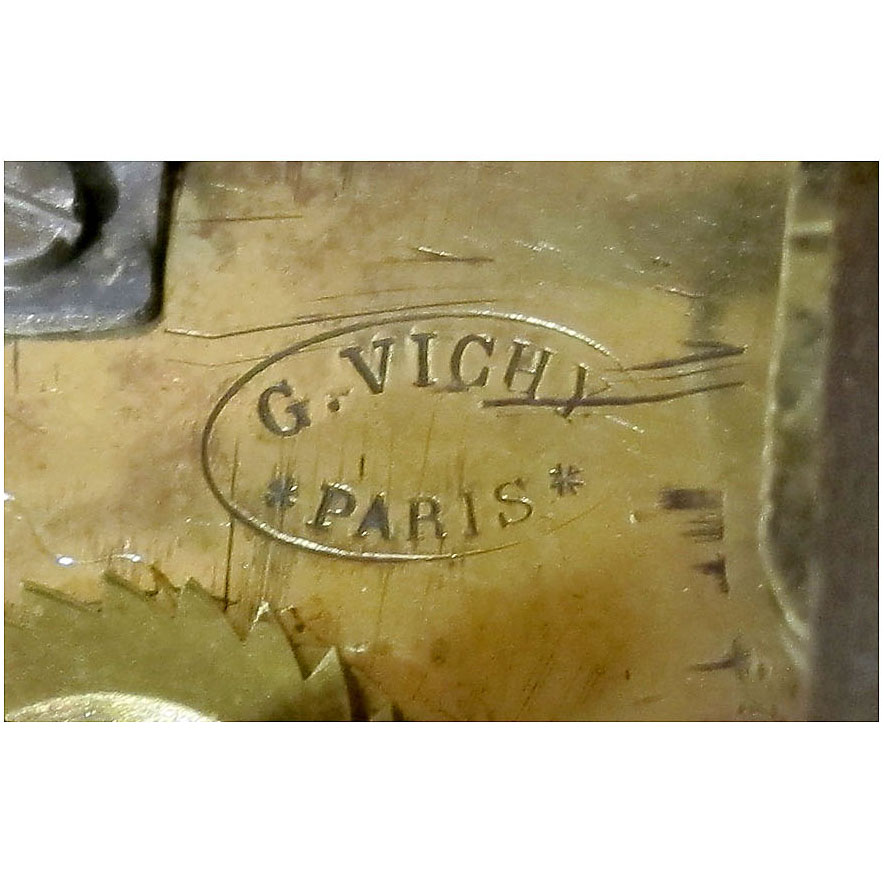
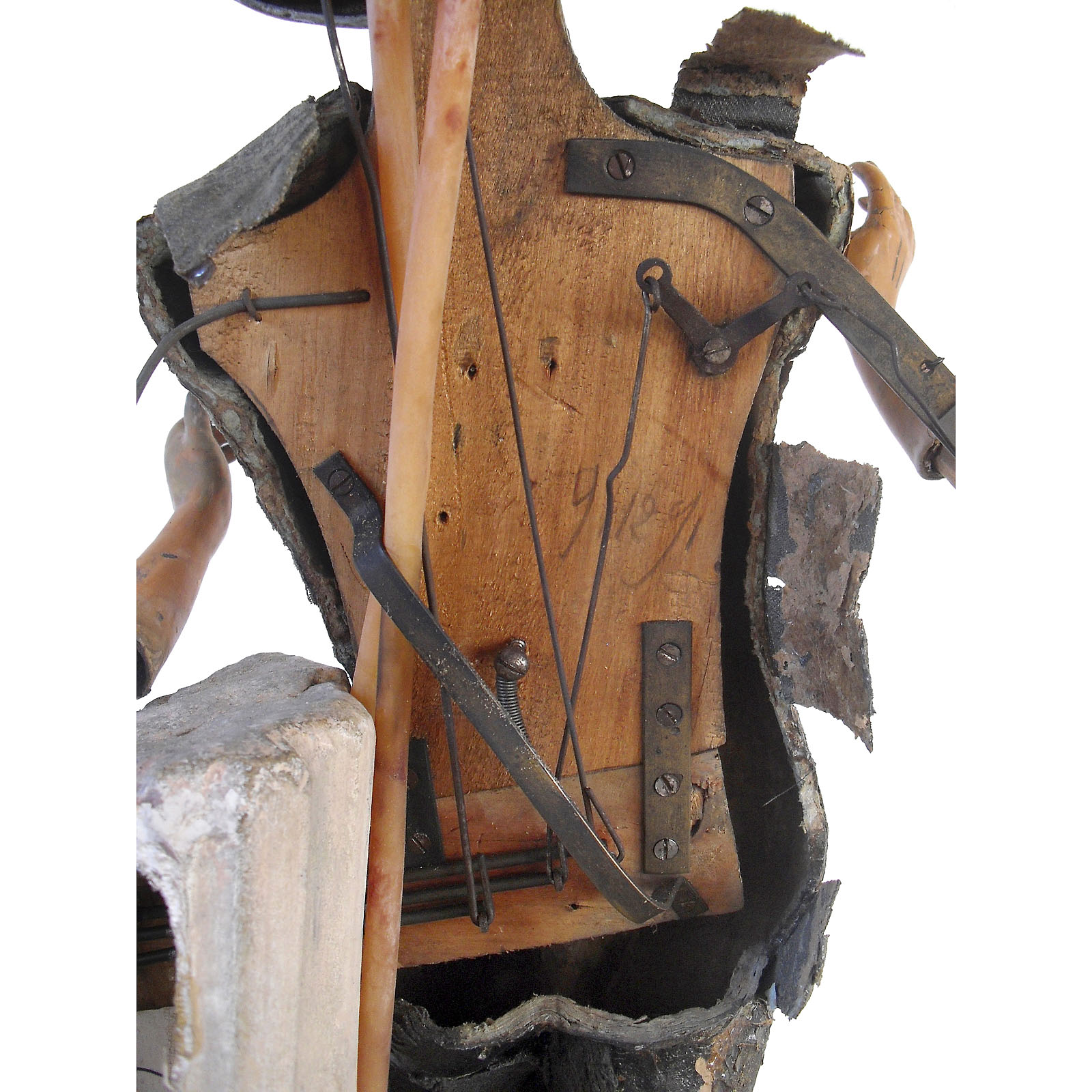
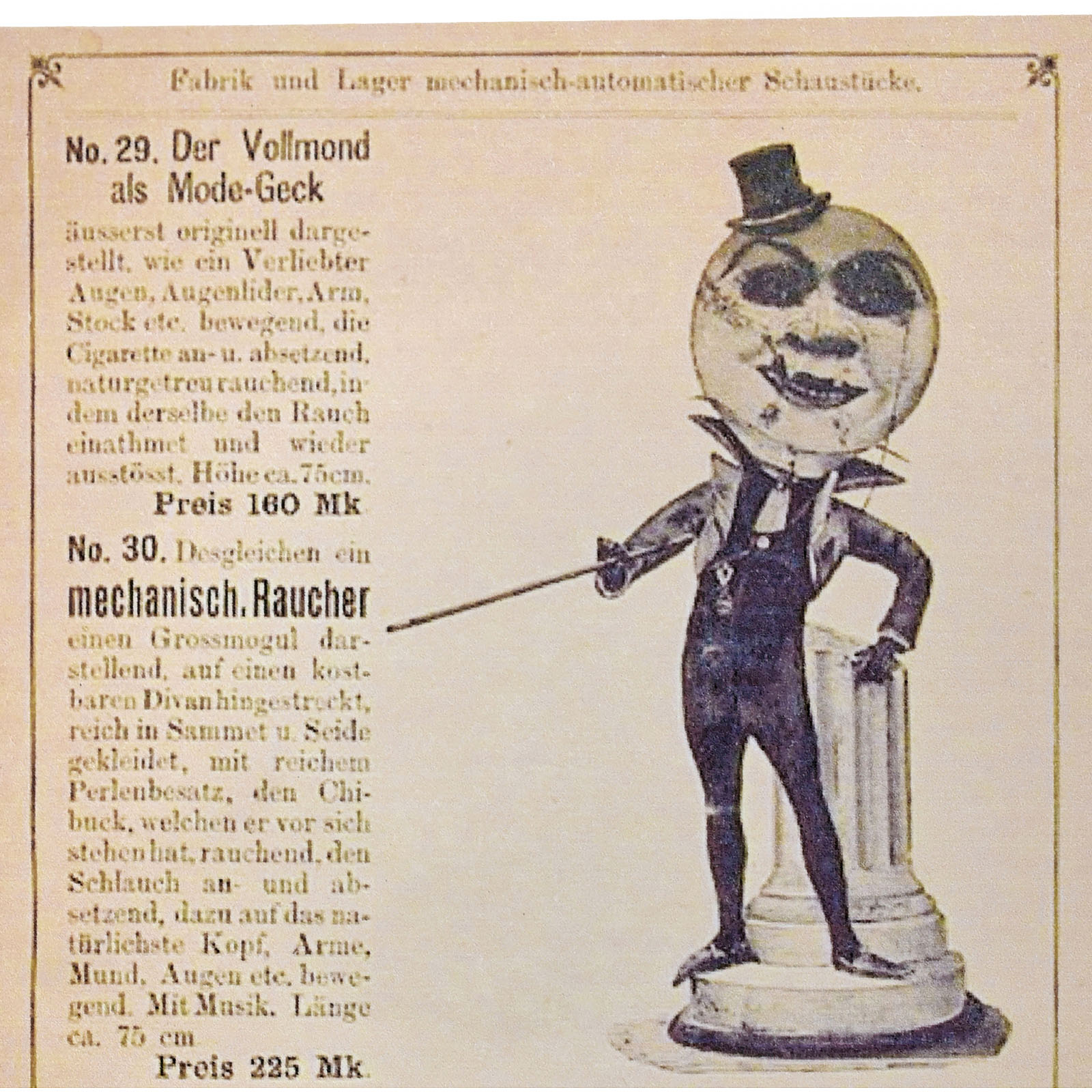

Depicting a young man with large full moon face leaning against a fluted column, a cigarette between his lips and a walking cane in his right hand, with plaster-composition head, articulated brown glass eyes and wire monocle, dressed in burgundy satin tailcoat, cream silk waistcoat, yellow tie and pointed shoes. The base containing going-barrel motor stamped "G. Vichy * Paris *", three cams, bellows and two-air cylinder movement, ht. 29 ½ in. (75 cm), old paint surface on face, original paint on pillar and hands, with steel key and acorn-form stop/start. The figure tilts his head from side to side, rolls his eyes and twirls his cane as he inhales from a lighted cigarette placed in the holder and blows the smoke out through his nose. The movement is in good restored working condition. The "Lune Fin de Siècle" – one of Vichy's most recognisable automata – draws on the popularity of the moon as a motif in French literature and visual culture during the late 19th and early 20th century. Perhaps the most famous motif of the moon as a human face is found in Georges Méliès's silent film "Voyage dans la Lune" (1902). "Lune Fin de Siècle" was described by Léo Claretie in his account of the French toy industry "Les Jouets, Histoire-Fabrication", written in around 1894, as "a young man whose head is a full moon, bright and shining, balancing in clouds of smoke". The German retailer Gustave Uhlig of Halle advertised the automaton in his catalogue of the same period as a "Mode Geck" or dandy, the "image of a man in love". Gustave Vichy and his son Henry both used the face of the "Lune Fin de Siècle" as a registered trademark on the company's letterheads, labels and advertising. The original model may have been sculpted by Henry Vichy himself. Certainly the figure shows signs of Henry's influence, including the shapely modeling of the slender body and a sense of the unexpected in the large round head that appears to rest upon it. Another indication of Henry work is the pencil date "9.12.91" found on the figure's bedplate. During this time father and son were working together under the name G & Hy. Vichy. The practice of the Vichy firm to date its automata is seen in the similarly marked Lot 629 (also by Henry Vichy) in this catalogue. Despite the importance of the automaton as the firm's trademark, very few examples of the "Lune Fin de Siècle" appear to have been produced or to have survived. To date we know of eight other examples – five in private collections, three in museums: Museé de Louvain-la-Neuve, Museé de Neuilly and Kyoto Arashiyama Organ Museum. Provenance: "Lune Fin de Siècle" was part of the Atracciones Apolo, an indoor amusement park opened by Josep Vallés Rovira on Parallel Avenue, Barcelona, in 1935. Atracciones Apolo was a popular destination and featured in two films: "Apartado des Correos 2001" (1950) and "El fugitivo de Amberes" (1955). Alongside the magic grotto, the "Autogruta" ghost train and other rides, the park also contained the "Museo las Maravillosas Figuras en sus Dioramas" (Museum of Marvellous Figures in their Dioramas) featuring automata exhibited as scenes in floor-standing cabinets. The automata in the Apolo had presumably once formed part of an older Spanish collection, as the majority of the figures originated in the workshops of Gustave Vichy, Leopold Lambert and Roullet et Decamps. All operated from electric motors but many (including the "Lune Fin de Siècle") also retained their original clockwork motors inside the cabinets. According to an article published by "Edición del Domingo" on 19 August 1990, the automata exhibit closed in 1957. During the following two decades many of the other original features also disappeared as Atracciones Apolo transformed into an amusement arcade. The park closed its doors to the public in around 1991 and the bulk of the building was demolished. The Apolo's collection of automata and mechanical effects was eventually dispersed amongst La Fira bar in Barcelona, the Museu de Joguets i Autòmats in Verdú and a well-known antique doll specialist in the South of England. The automaton offered here has been restored to full mechanical function at the House of Automata in Forres, Scotland. Restoration included re-fitting the governor and replacing the bellows unit and lower part of the plinth base to the original pattern. – A rare and surreal automaton with a significant provenance. References: Léo Claretie, "Les Jouets, Histoire-Fabrication", published in "The Musical Box Society International", Winter 1976, p. 29; "A Great and Magical Collection", catalogue of Museu de Joguets i Autòmats, pp. 313–325; "Edición del Domingo", 19 August 1990, p. 18. http://archivo.elperiodico.com/ed/19900819/pag_018.html; Bailly, "Automata, the Golden Age", p. 68, for similar piece.

